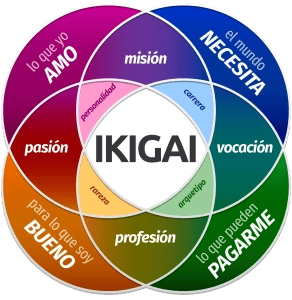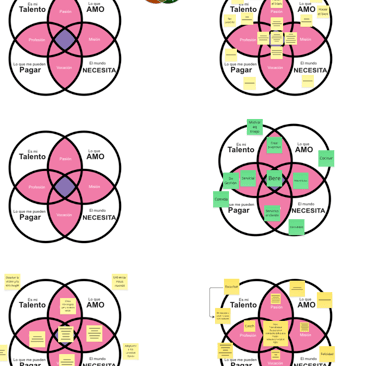🚀 Discovering Meaningn and Purpose with IKIGAI
✨ Are your team members showing up—but not lighting up? Do your retrospectives feel more like routines than moments of real connection? What if the missing piece wasn’t a new tool, but a deeper sense of purpose?
MANAGEMENT 3.0AGILE
Lautaro Martín
5/31/20253 min read


🚀 Introduction
In the world of agile leadership and team development, having a clear purpose isn’t a luxury—it’s essential. Teams without purpose drift, lose energy, and underperform.
In Management 3.0, we believe leadership starts with self-awareness and meaning. That’s where I discovered Ikigai, a Japanese concept that transformed the way I help people navigate their professional journey.
🎯 About the practice
Ikigai (生き甲斐) roughly translates to “reason for being.”
It represents the intersection of:
What you love
What you are good at
What the world needs
What you can be paid for
When these four areas align, your Ikigai emerges—the sweet spot where passion, mission, vocation, and profession converge.
It’s a powerful personal development tool that can be used individually or as a group reflection practice.
In the context of Management 3.0, Ikigai becomes a tool to unlock intrinsic motivation, strengthen autonomy, and align personal talents with team and organizational goals.
💡 Why to use it?
I noticed that some teams had a good atmosphere and acceptable results, but something was missing: a sense of meaning.
People were performing their tasks but didn’t seem emotionally connected to them. At the same time, leaders were looking for tools to better understand their team members—without relying on sterile evaluations or impersonal surveys.
I was searching for a way to encourage meaningful, human conversations. Ikigai, with its simplicity and depth, turned out to be the perfect fit.
🛠️ How to use it?
II introduced the Ikigai in a remote workshop with a cross-functional agile team. The session lasted 90 minutes and was divided into two main parts:
Part 1: Introduction & Explanation
We started with a short, engaging explanation of the Ikigai concept, using visuals and real-life examples to make it tangible.
I emphasized how this practice helps us reflect on our unique motivations and how they relate to our daily work.
Participants were encouraged to see Ikigai not as something fixed, but as something evolving, just like their roles and careers.
Part 2: Individual Exploration on Miro
Next, we moved into practice. Each participant received their own Ikigai template on a shared Miro board, pre-designed with the four intersecting circles and guiding questions.
In silence, everyone took 20–25 minutes to reflect and write inside their circles:
What do I love?
What am I good at?
What does the world (or my team) need from me?
What can I be paid or recognized for?
After the individual reflection, we had an optional sharing round, where volunteers presented key insights.
The energy in the virtual room shifted—people shared personal stories, career shifts, hidden talents, and dreams they had almost forgotten.
It turned into one of the most humanizing and connecting sessions the team had experienced in months.
📚 Learnings and Conclusions
Ikigai exceeded all expectations. Here are some of my key takeaways:
People feel truly valued when they can express what gives their work meaning.
Teams with a clear purpose make better decisions and are more resilient to change.
Ikigai is not a one-time exercise—it’s a living compass that needs to be revisited regularly.
As a leader, my biggest learning was that I don’t need to motivate people—I need to create the space where they can motivate themselves.
Ikigai is more than just a beautiful diagram. It’s a deep transformational tool that, when integrated into Management 3.0 practices, helps leaders foster purpose-driven teams that are happier, more aware, and more effective.
Interested in trying this practice with your team?
Let’s connect—I’d be happy to help you design a customized Ikigai + Agile Leadership session.


